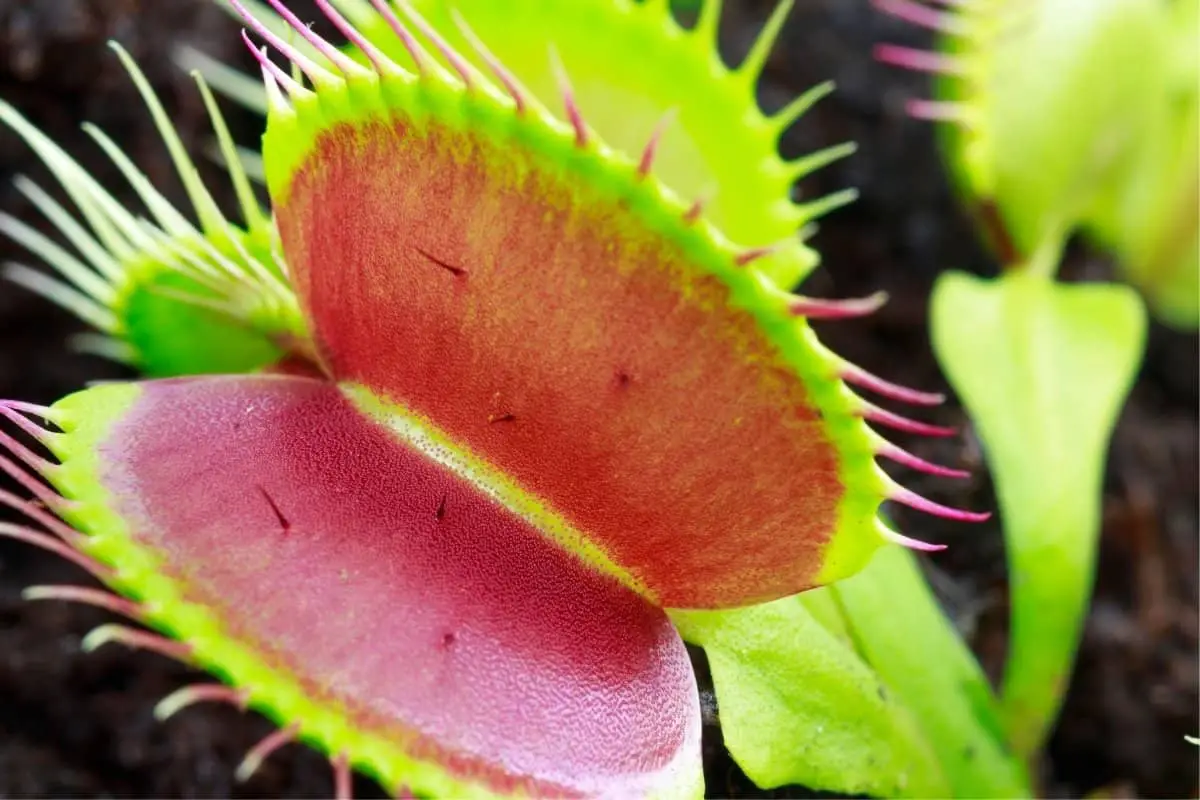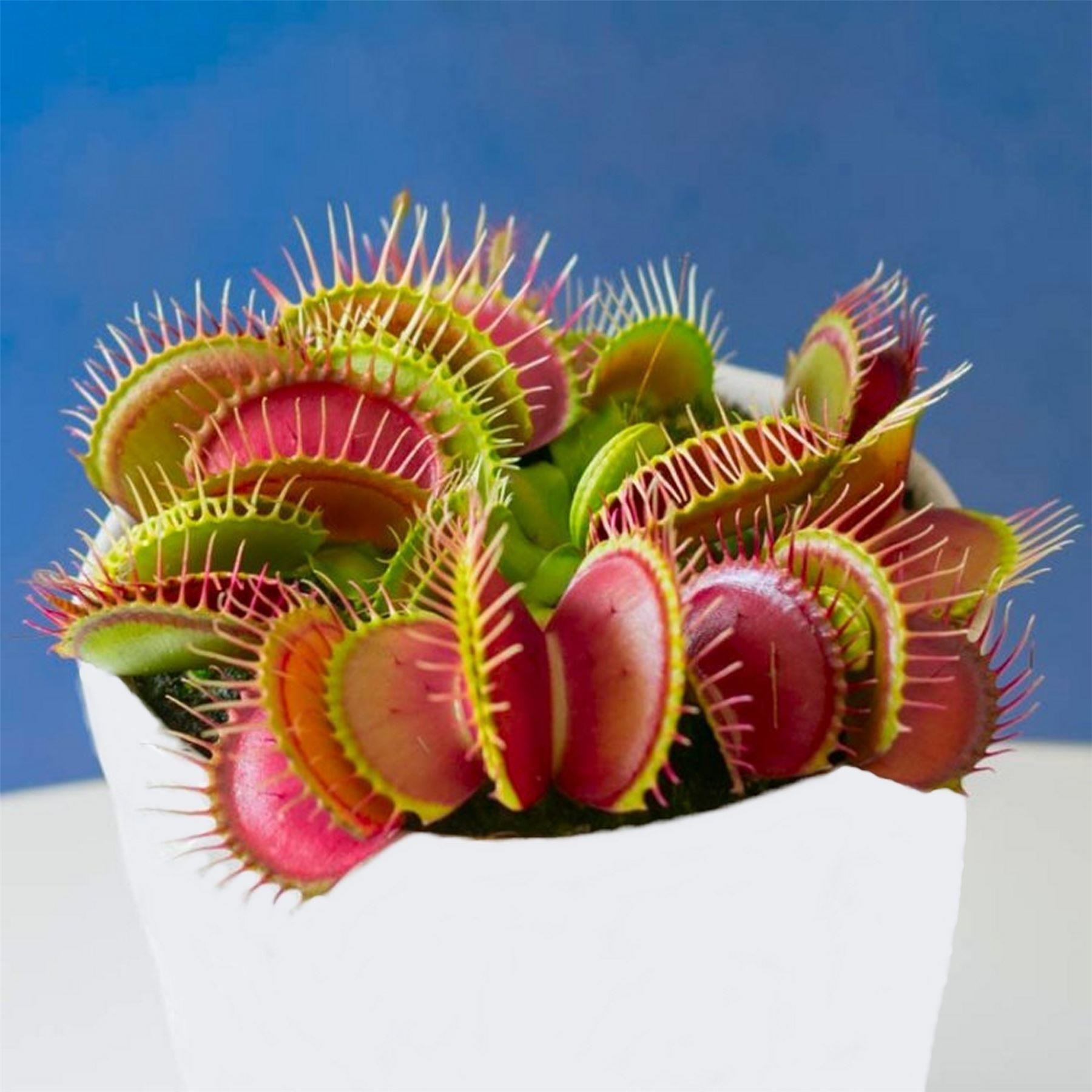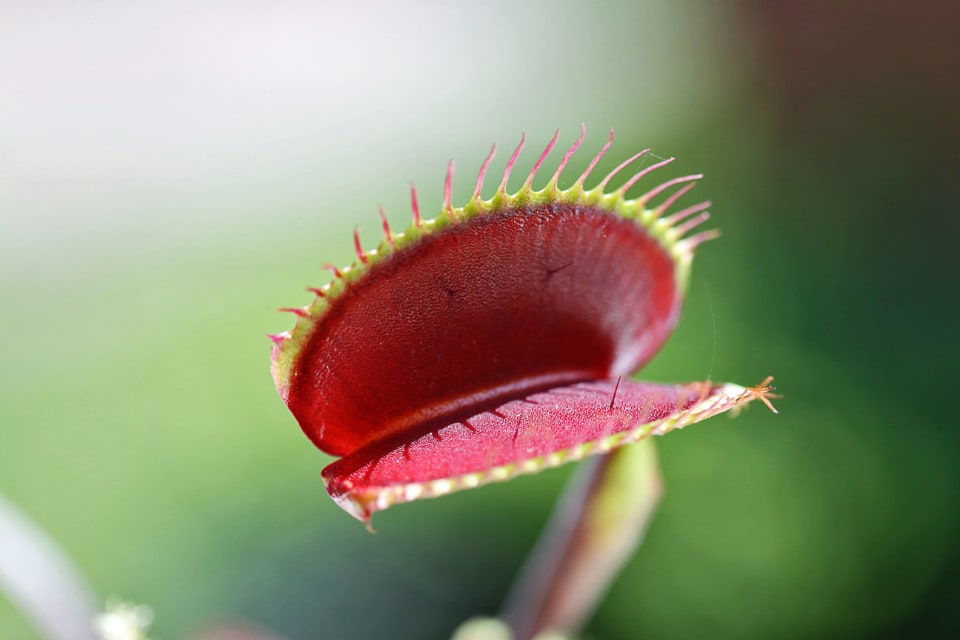Understanding the Temperature Needs of Venus Flytraps
Venus flytraps, also known as Dionaea muscipula, are carnivorous plants native to the bogs and savannas of North and South Carolina. These unique plants have adapted to obtain essential nutrients by capturing and digesting insects, and their growth and health are heavily influenced by temperature. Maintaining the optimal temperature for Venus flytraps is crucial to ensure their survival and thrive.
The ideal temperature range for Venus flytraps is between 65°F (18°C) and 85°F (29°C), with a preferred temperature of around 75°F (24°C) during the day and no lower than 55°F (13°C) at night. Temperatures above 90°F (32°C) can lead to heat stress, while temperatures below 40°F (4°C) can cause damage to the plant’s roots and leaves.
Temperature affects not only the growth and health of Venus flytraps but also their ability to capture and digest prey. In temperatures above 80°F (27°C), the plant’s digestive enzymes are more active, allowing for faster breakdown of nutrients. However, temperatures below 60°F (16°C) can slow down the digestive process, leading to reduced nutrient uptake.
It’s essential to note that Venus flytraps require a temperature gradient to thrive. A temperature difference of 5-10°F (3-6°C) between day and night is necessary to simulate the natural temperature fluctuations found in their native habitats. This temperature gradient helps regulate the plant’s growth, flowering, and seed production.
By understanding the temperature needs of Venus flytraps, growers can provide the optimal conditions for their plants to thrive. Maintaining a consistent temperature within the ideal range, avoiding extreme temperatures, and providing a temperature gradient will help ensure the health and well-being of these unique carnivorous plants.
In the next section, we will discuss how to create a temperature-friendly environment for your Venus flytrap, including the use of thermometers, heating mats, and insulation.
How to Create a Temperature-Friendly Environment for Your Venus Flytrap
Creating a temperature-friendly environment for your Venus flytrap is crucial to ensure its optimal growth and health. To maintain the ideal temperature range of 65°F (18°C) to 85°F (29°C), you can use a combination of thermometers, heating mats, and insulation.
Thermometers are essential for monitoring the temperature of your Venus flytrap’s environment. Digital thermometers are accurate and easy to use, and they can be placed near the plant to provide real-time temperature readings. This will help you identify any temperature fluctuations and make adjustments as needed.
Heating mats are a great way to maintain a consistent temperature for your Venus flytrap. These mats are designed to provide gentle heat and can be placed under the pot to warm the soil and roots. Look for a heating mat specifically designed for plants, and follow the manufacturer’s instructions for use.
Insulation is also important for maintaining a stable temperature. You can use a layer of insulation, such as foam board or bubble wrap, to line the pot and prevent heat from escaping. This will help keep the soil and roots warm, even in cooler temperatures.
Avoid placing your Venus flytrap near heating vents, radiators, or air conditioning units, as these can cause extreme temperature fluctuations. Also, avoid placing the plant in direct sunlight, as this can cause overheating.
By using thermometers, heating mats, and insulation, you can create a temperature-friendly environment for your Venus flytrap. Remember to monitor the temperature regularly and make adjustments as needed to ensure optimal growth and health.
In addition to using these tools, it’s also important to provide a temperature gradient for your Venus flytrap. A temperature gradient of 5-10°F (3-6°C) between day and night will help simulate the natural temperature fluctuations found in the plant’s native habitat.
By following these tips and creating a temperature-friendly environment, you can help your Venus flytrap thrive and enjoy optimal growth and health.
The Impact of Temperature on Venus Flytrap Digestion and Nutrient Uptake
Temperature plays a crucial role in the digestive process of Venus flytraps, affecting the breakdown of nutrients and the absorption of essential minerals. The optimal temperature range for Venus flytraps, between 65°F (18°C) and 85°F (29°C), allows for efficient digestion and nutrient uptake.
At temperatures above 80°F (27°C), the digestive enzymes in Venus flytraps are more active, allowing for faster breakdown of nutrients. This enables the plant to absorb the necessary nutrients and minerals from its prey, promoting healthy growth and development.
On the other hand, temperatures below 60°F (16°C) can slow down the digestive process, leading to reduced nutrient uptake. This can impact the plant’s overall health, causing it to become weak and vulnerable to disease.
Temperature fluctuations can also impact the plant’s ability to digest and absorb nutrients. Sudden changes in temperature can cause stress to the plant, leading to reduced digestive efficiency and nutrient uptake.
It’s essential to maintain a consistent temperature within the optimal range to ensure efficient digestion and nutrient uptake. This can be achieved by using thermometers, heating mats, and insulation to regulate the temperature and provide a stable environment for the plant.
In addition to temperature, other factors such as humidity, light, and water quality also play a crucial role in the digestive process of Venus flytraps. By providing optimal conditions for the plant, growers can promote healthy growth and development, and ensure the plant’s ability to thrive.
By understanding the impact of temperature on Venus flytrap digestion and nutrient uptake, growers can take steps to provide the optimal conditions for their plants. This includes maintaining a consistent temperature, providing adequate humidity and light, and ensuring good water quality.
By following these guidelines, growers can promote healthy growth and development in their Venus flytraps, and ensure the plant’s ability to thrive in its environment.
Temperature-Related Challenges and Solutions for Indoor Venus Flytrap Care
Indoor Venus flytrap care can be challenging, especially when it comes to maintaining optimal temperature conditions. Two common temperature-related challenges faced by indoor growers are overheating and overcooling.
Overheating can occur when the plant is placed near a heat source, such as a radiator or heating vent. This can cause the temperature to rise above the optimal range, leading to stress and damage to the plant. To mitigate this issue, growers can use a thermometer to monitor the temperature and move the plant to a cooler location if necessary.
Overcooling, on the other hand, can occur when the plant is placed in a drafty or cold location. This can cause the temperature to drop below the optimal range, leading to slowed growth and reduced digestive efficiency. To mitigate this issue, growers can use insulation or a heating mat to maintain a consistent temperature.
Another challenge faced by indoor growers is maintaining a temperature gradient. Venus flytraps require a temperature gradient of 5-10°F (3-6°C) between day and night to simulate the natural temperature fluctuations found in their native habitat. To achieve this, growers can use a combination of heating and cooling devices, such as a heating mat and a fan.
In addition to these challenges, indoor growers may also face issues related to humidity and light. Venus flytraps require high humidity and bright, indirect light to thrive. To maintain optimal humidity, growers can use a humidifier or group plants together to create a microclimate. To provide optimal light, growers can use grow lights or place the plant near a sunny window.
By understanding the common temperature-related challenges faced by indoor Venus flytrap growers, growers can take steps to mitigate these issues and provide optimal conditions for their plants. This includes monitoring temperature, maintaining a temperature gradient, and providing optimal humidity and light.
By following these guidelines, growers can help their Venus flytraps thrive in indoor conditions and enjoy optimal growth and health.
Comparing Temperature Requirements for Different Carnivorous Plant Species
Carnivorous plants, including Venus flytraps, pitcher plants, and sundews, have unique temperature requirements that must be met to ensure optimal growth and health. While Venus flytraps require a temperature range of 65°F (18°C) to 85°F (29°C), other carnivorous plant species have different temperature needs.
Pitcher plants, for example, require a slightly cooler temperature range of 55°F (13°C) to 75°F (24°C). These plants are native to bogs and swamps, where the temperature is generally cooler than in the native habitat of Venus flytraps.
Sundews, on the other hand, require a temperature range of 60°F (16°C) to 80°F (27°C). These plants are native to a variety of habitats, including bogs, swamps, and rocky outcroppings, and can tolerate a wider range of temperatures than Venus flytraps.
It’s essential to research the specific temperature requirements of each carnivorous plant species to ensure optimal growth and health. Providing the right temperature conditions can make a significant difference in the plant’s ability to thrive.
In addition to temperature, other factors such as humidity, light, and water quality also play a crucial role in the growth and health of carnivorous plants. By understanding the unique needs of each species, growers can provide the optimal conditions for their plants to thrive.
By comparing the temperature requirements of different carnivorous plant species, growers can gain a deeper understanding of the unique needs of each plant. This knowledge can be used to create a tailored care plan that meets the specific needs of each species, ensuring optimal growth and health.
Whether you’re growing Venus flytraps, pitcher plants, or sundews, providing the right temperature conditions is essential for optimal growth and health. By understanding the unique temperature requirements of each species, you can create a thriving and diverse collection of carnivorous plants.
Monitoring and Adjusting Temperature for Optimal Venus Flytrap Growth
Monitoring temperature is crucial for optimal Venus flytrap growth and health. By keeping track of temperature fluctuations, growers can make informed decisions about how to adjust the temperature to meet the plant’s needs.
One way to monitor temperature is to use a thermometer. Digital thermometers are accurate and easy to use, and they can be placed near the plant to provide real-time temperature readings. This will help growers identify any temperature fluctuations and make adjustments as needed.
Another way to monitor temperature is to use a temperature data logger. These devices can record temperature data over a period of time, providing a detailed picture of temperature fluctuations. This information can be used to identify patterns and make adjustments to the temperature.
When monitoring temperature, it’s essential to consider the temperature gradient. Venus flytraps require a temperature gradient of 5-10°F (3-6°C) between day and night to simulate the natural temperature fluctuations found in their native habitat. By monitoring the temperature gradient, growers can ensure that the plant is receiving the optimal temperature conditions.
Adjusting temperature is also crucial for optimal Venus flytrap growth and health. By adjusting the temperature to meet the plant’s needs, growers can promote healthy growth and development. For example, if the temperature is too high, growers can use shading or ventilation to reduce the temperature. If the temperature is too low, growers can use heating mats or insulation to increase the temperature.
By monitoring and adjusting temperature, growers can create an optimal environment for their Venus flytraps. This will promote healthy growth and development, and ensure that the plant thrives.
Some additional tips for monitoring and adjusting temperature include:
- Use a thermometer to monitor temperature fluctuations
- Use a temperature data logger to record temperature data over time
- Consider the temperature gradient when monitoring temperature
- Adjust temperature as needed to meet the plant’s needs
- Use shading or ventilation to reduce temperature if it’s too high
- Use heating mats or insulation to increase temperature if it’s too low
By following these tips, growers can create an optimal environment for their Venus flytraps and promote healthy growth and development.
Common Temperature-Related Mistakes to Avoid When Growing Venus Flytraps
When growing Venus flytraps, it’s essential to avoid common temperature-related mistakes that can impact the plant’s health and growth. One of the most common mistakes is neglecting to provide a temperature gradient.
A temperature gradient is essential for Venus flytraps, as it simulates the natural temperature fluctuations found in their native habitat. Without a temperature gradient, the plant may not receive the optimal temperature conditions, leading to reduced growth and health.
Another common mistake is ignoring temperature fluctuations. Venus flytraps are sensitive to temperature changes, and ignoring these fluctuations can lead to stress and damage to the plant.
Other common temperature-related mistakes include:
- Placing the plant in direct sunlight, which can cause overheating
- Placing the plant in a drafty or cold location, which can cause overcooling
- Using heating mats or insulation without monitoring the temperature
- Not adjusting the temperature for seasonal changes
By avoiding these common temperature-related mistakes, growers can create an optimal environment for their Venus flytraps and promote healthy growth and development.
Some additional tips for avoiding temperature-related mistakes include:
- Monitoring the temperature regularly to ensure optimal conditions
- Providing a temperature gradient to simulate natural temperature fluctuations
- Adjusting the temperature for seasonal changes
- Using heating mats or insulation with caution and monitoring the temperature
By following these tips, growers can avoid common temperature-related mistakes and create an optimal environment for their Venus flytraps.
Conclusion: Mastering the Art of Temperature Control for Happy, Healthy Venus Flytraps
Temperature is a critical factor in the growth and health of Venus flytraps. By understanding the optimal temperature range for these plants and how to maintain it, growers can create an environment that promotes healthy growth and development.
In this article, we have discussed the importance of temperature for Venus flytraps, including the ideal temperature range and how to maintain it. We have also explored common temperature-related challenges faced by indoor growers and provided solutions and advice on how to mitigate these issues.
Additionally, we have compared the temperature requirements of Venus flytraps with other carnivorous plant species and discussed the unique temperature needs of each species. We have also emphasized the importance of monitoring temperature and adjusting it as needed to ensure optimal growth and health for Venus flytraps.
By following the tips and recommendations outlined in this article, growers can master the art of temperature control and create an optimal environment for their Venus flytraps. This will promote healthy growth and development, and ensure that the plant thrives.
Some final tips for achieving optimal temperature conditions for your Venus flytrap include:
- Monitor the temperature regularly to ensure optimal conditions
- Provide a temperature gradient to simulate natural temperature fluctuations
- Adjust the temperature for seasonal changes
- Use heating mats or insulation with caution and monitoring the temperature
By following these tips and recommendations, growers can create an optimal environment for their Venus flytraps and promote healthy growth and development.





